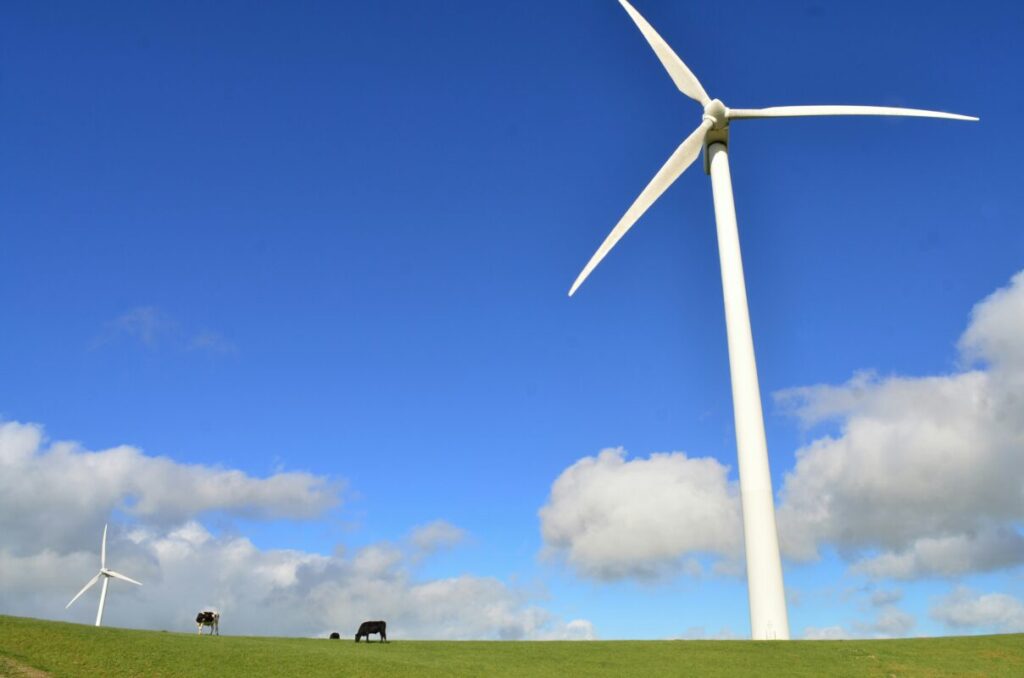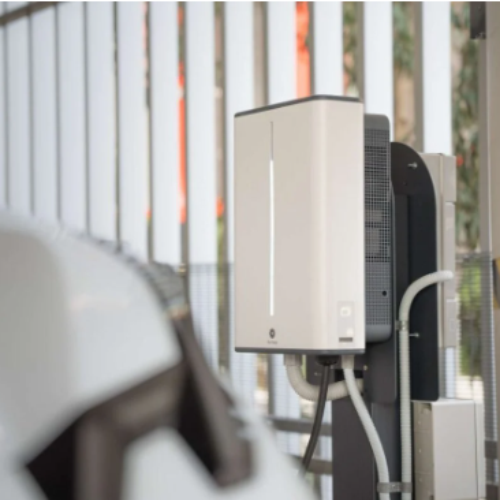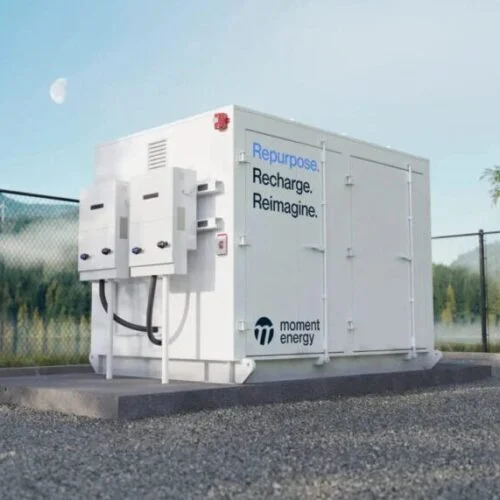Analysis from Carbon Brief has revealed that 2024 marked the cleanest-ever year for UK electricity as emissions per unit plummeted.
An examination of data from the National Energy System Operator (NESO) and the Department for Energy Security and Net Zero (DESNZ) showed that 91TWh of UK electricity came from fossil fuel sources in 2024, down 12.5% from 104TWh in 2023 and falling 55% in the last decade from 203TWh in 2014. With the UK closing its final coal-fueled power plant in September, the vast majority of fossil fuel generation came from gas, with UK gas-fired power stations generating 88TWh of electricity last year.
Although gas remained the UK’s single largest source of electricity at 28% of total generation, wind power is closing the gap, with UK wind farms generating 84TWh (26%) last year. With several new wind power projects set to be completed in 2025, Carbon Brief forecasts that wind will overtake gas as the top single source of electricity generation in the coming year. Major offshore wind projects set to come online in 2025 include the 1.2GW Dogger Bank A development in the North Sea, as well as Scottish developments Moray West (0.9GW) and Neart na Goithe (0.5GW). Unusually low wind speeds in 2024 are set to return to normal levels in 2025, another factor expected to contribute to wind power’s predicted dominance in the coming year.
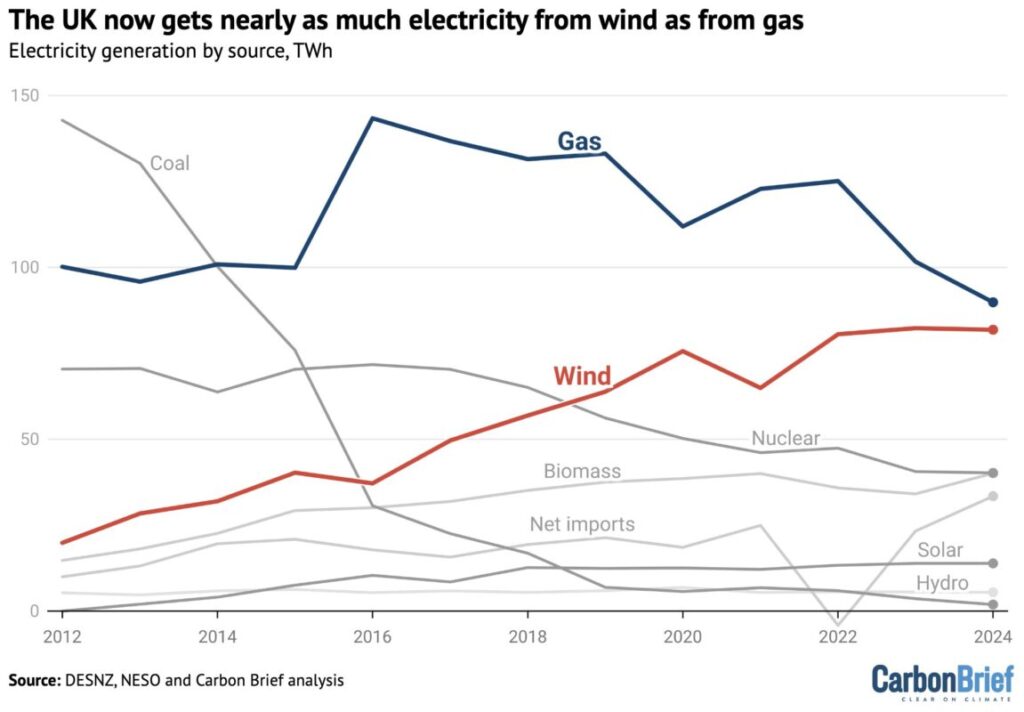
Around 58% of UK electricity, or 64% if exports are excluded, came from clean sources last year, both record figures for the nation. Solar PV power plants generated 14TWh of electricity, 4% of total generation, with nuclear contributing 41TWh (13%), biomass making up 40TWh (13%), and imports from all generation types making up 11% of UK electricity at 33TWh.
Carbon intensity of UK electricity plummets
With the rise of renewable energy in the UK comes declining carbon emissions, which have plummeted from a total 150 million tonnes of CO2 (MtCO2) in 2014 to less than 40MtCO2 in 2024 – a drop of 74% across the decade. Emissions per unit fell to 124g of CO2 per KWh in 2024, down 23% from the previous year (162g per KWh) and down a whopping 70% from 2014’s 419g per KWh. While this is progress, it is still far short of the 50g of CO2 per KWh that is expected under the NESO’s Clean Power 2030 plan.
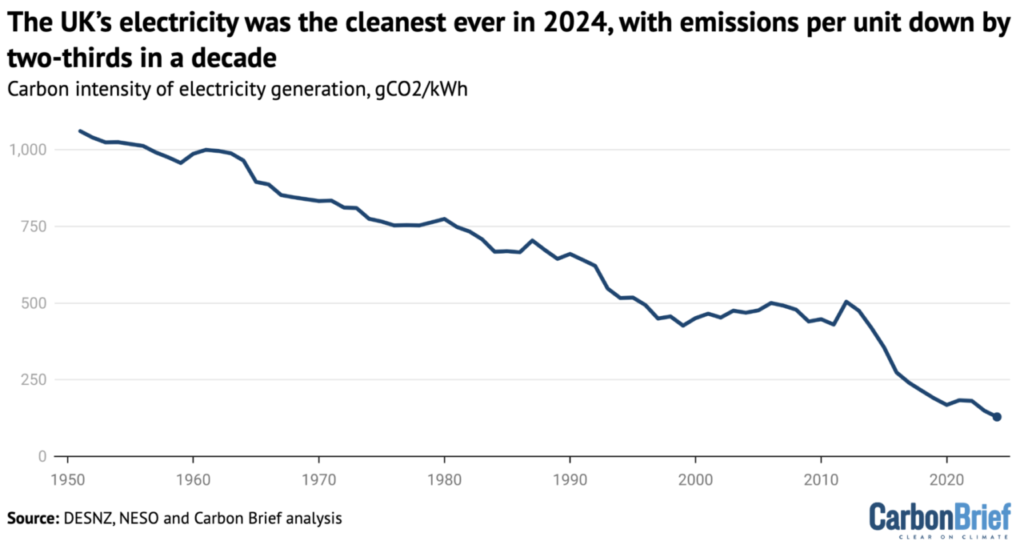
The declining carbon intensity of UK electricity means that electrified heat and transport is increasingly impactful in the fight to cut carbon emissions. According to Carbon Brief’s analysis, the average UK home with a heat pump installed would have used roughly 1.4 tonnes of CO2 in 2014, 45% lower than the average household with a gas boiler. In 2024, the average household with a heat pump contributes a mere 0.4 tonnes of CO2 annually, 84% lower than the gas boiler average.
Electric vehicles (EVs) are seeing similar benefits, with the average UK EV responsible for 245kg of CO2 emissions in 2024, a drop of 70.4% from 2014’s average of 830kg per year. With the average petrol car responsible for 2.7 tonnes of CO2 emissions each year, an EV driven at 2024’s electricity emissions intensity for its entire lifespan would see emissions reductions of 70% over its lifecycle, compared to 50% at 2014 carbon intensity.
